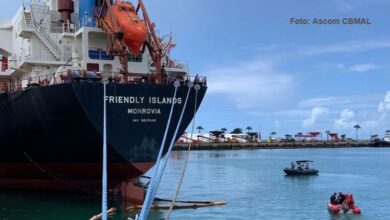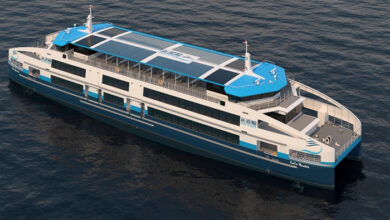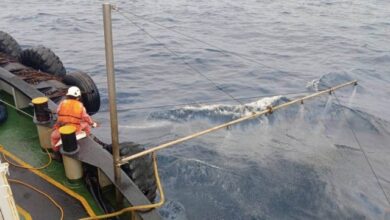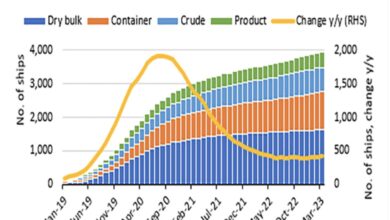IWSA : Wind-powered cargo capacity surpasses one million DWT Inbox
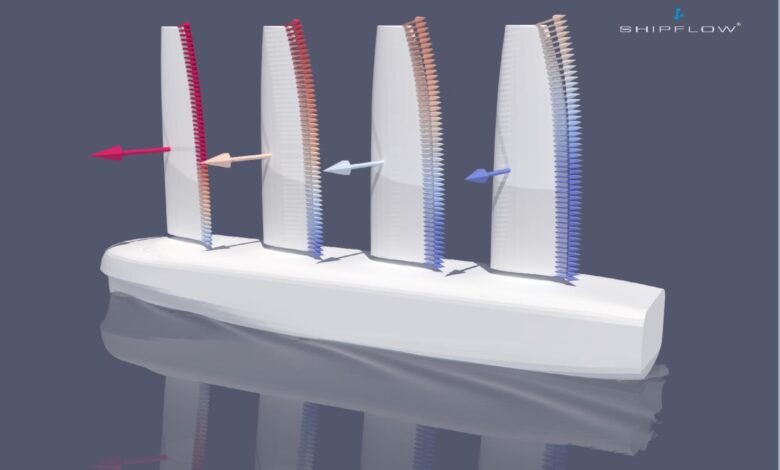
Gavin Allwright: “Wind propulsion technologies save 5-20% in fuel use on motor vessel profiles.
The end of this year, IWSA estimates that wind propulsion technology will be installed on around twenty-five large commercial vessels, representing 1.2 million DWT
London –: The latest installations of wind propulsion technology on large commercial vessels have tipped the amount of cargo that can be transported on vessels that make use of wind as a renewable energy source over the one million tonnes of deadweight (DWT) milestone.
The timing of wind-powered ship propulsion passing this pivotal milestone comes in the same week that the industry celebrates World Maritime Day and its theme “New Technologies for Greener Shipping”.

In recent years, there has been a resurgence of interest in equipping vessels to harness the power of the wind. What was once romanticised as a historic way to sail cargo across the world’s oceans has become a credible option for modern vessels, fuelled by incoming carbon reduction targets and high fuel prices.

As the only industry association for wind-assist and primary wind technology developers, and institutions supporting the use of wind, the International Windship Association (IWSA) has welcomed an upsurge in the analysis, testing and verification of systems, in addition to the deployment of many demonstrator vessels since 2020.
Currently, twenty-one large commercial vessels have wind propulsion systems installed onboard representing over one million DWT of cargo carrying capacity. By the end of this year, IWSA estimates that wind propulsion technology will be installed on around twenty-five large commercial vessels, representing 1.2 million DWT.
Based on public announcements and shipyard orders made to-date, IWSA also estimates that by the end of 2023, up to fifty large ships will be making use of wind as a renewable energy source with a combined tonnage of over three million DWT.
In addition to the fleet of large commercial ships sailing with wind propulsion technology installed, ten small cruise ships currently use traditional soft sail technology representing a further 50,000 Gross Register Tonnage (GRT). There are also a growing number of smaller vessels (under 400 GRT) using wind propulsion technology.

The number of smaller vessels will also likely grow in the next year as more vessels are converted to sail cargo, retrofits on small fishing vessels are undertaken, and a demonstrator vessel is launched in the South Pacific.

Wind power offers the only truly emission-free, zero-cost energy source that can be delivered directly to a ship while it is sailing without fuel security or supply threats.
The use of this abundant, globally available energy source, partially with wind-assist technology or as the primary energy source for a vessel’s propulsion, can represent a substantial portion of the total energy requirement of a vessel throughout its operational life
Gavin Allwright, IWSA Secretary General says: “Wind propulsion technologies are proven to save 5-20% in fuel use and associated emissions when used as wind-assist on motor vessel profiles.
The savings potential is even higher for vessels that use primary wind technologies to achieve much higher levels of propulsive energy sourced from wind. This makes wind power a valuable pathway to reducing the emissions of the international shipping industry immediately and over the longer-term.
It also offers the potential for enabling a substantial reduction in the carbon intensity of the whole fleet.”

Allwright continues: “With fifty wind propulsion system rigs installed to-date on those twenty-one ships, and an anticipated one-hundred rigs installed milestone to be passed by the end of 2023, the price of propulsion technology is coming down.
Reaching the one-hundred rigs installed milestone will represent an important market marker for wind propulsion technology in particular. At this point we can expect a sustained reduction in return-on-investment timeframes, especially if fuel prices remain high.
It’s easy to see why wind is becoming an increasingly attractive option for ship owners given its positive financial and decarbonisation potential and the fact that this technology basket delivers on compliance issues, today.”

International Windship Association (IWSA):
facilitates and promotes wind propulsion solutions for commercial shipping worldwide and brings together all parties in the development of a wind ship sector to shape industry and government attitudes and policies.
IWSA is a member driven, not-for-profit association made up of wind propulsion technology suppliers and ship development projects, shipping lines, shipbuilders, designers, naval architects, engineers, academics, NGO’s, and Class with five main areas of activity:
Network – grouping like-minded organisations and individuals sharing ideas, skills, technical and market information for the development of commercial wind ships.
Promote – promoting the economic value of wind propulsion to the industry
Educate – acting as a central information hub for the wind propulsion sector, ship owners and operators, shipyards, ports, governments, equipment producers, the media, NGOs, and the wider public.
Incubate – securing funding streams, project collaboration, grant applications, research and the pooling of resources.
Facilitate – establishing common approaches/criteria for all stages of project development, support stakeholders, advise and lobby legislative bodies on policies, activities, funding and incentives required to retrofit existing ships and build new commercial wind ships.
As the only industry association for wind-assist and pure wind technology developers and institutions with a commercial interest in wind power, the IWSA has welcomed a huge rise in its membership in the past few years.






